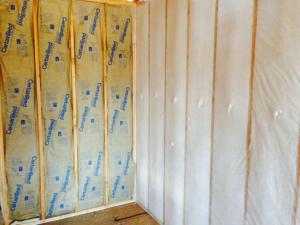Insulation. Most people don’t think about it during the spring and summer but they should. You see, the proper amount of insulation and R-Value is important all year round and here is why.
Insulation can help control conduction, convection and radiation of heat. These forces are at work in your attic whether you have insulation or not. Having the proper amount helps control these elements and works to the homes advantage by keeping the attic at a temperature comparable to the homes interior temperature, thus saving you money on your energy bills.
How does insulation work?
Conduction is the way heat moves through materials. Convection is the way heat moves through liquids and gases. Convection is the reason hot air rises and cool air does not. Radiant heat is a straight line and will warm anything in that line that can absorb the heat. A proper amount of insulation will slow the transfer of heat. If it is warm outside, it works to keep the house cool and if you are heating your house in the winter, it works to keep the heat in. The recommended R-Value of insulation is determined by the US Department of Energy for given region of the country based on the local energy costs for heating and cooling. The R-Value refers to thermal resistance. Using double the batting may increase the R-Value of the insulation but will not double it. Instead, replacing older, less energy efficient insulation with a new higher R-Value batt insulation will increase the R-Value and reduce energy costs as long as the it is properly installed and all the nooks and crannies are insulated as well.
Is Foam better than spray loose-fill?
It’s interesting to see how many people actually say they prefer foam to loose fill or batt insulation. Foam generally has a higher R Value but for many homeowners, the cost of foam does not outweigh the energy savings that a combination of foam and loose fill or batt can provide. This is a function of education for many contractors.
Proper Installation
No matter what type of insulation you choose, proper installation is the key to its energy savings. A contractor will know exactly where and how much insulation is needed. The contractor will take into consideration the air flow and moisture control for venting in the attic. If the attic is not properly vented, mold can ensue from the buildup of moisture due to a lack of fresh air flow through the space. If you don’t know what you’re doing and attempt to install the insulation yourself, you may inadvertently cover up an attic vent and moisture will ensue.
As you can see, adding insulation to your attic is a lot more complicated that it may initially seem. If you are looking to increase the effectiveness of your insulation and are looking to add insulation to your attic as a way to lower your energy costs, it makes sense to hire a professional insulation contractor, like Murray Insulation, to install your investment properly to get the most benefits.







